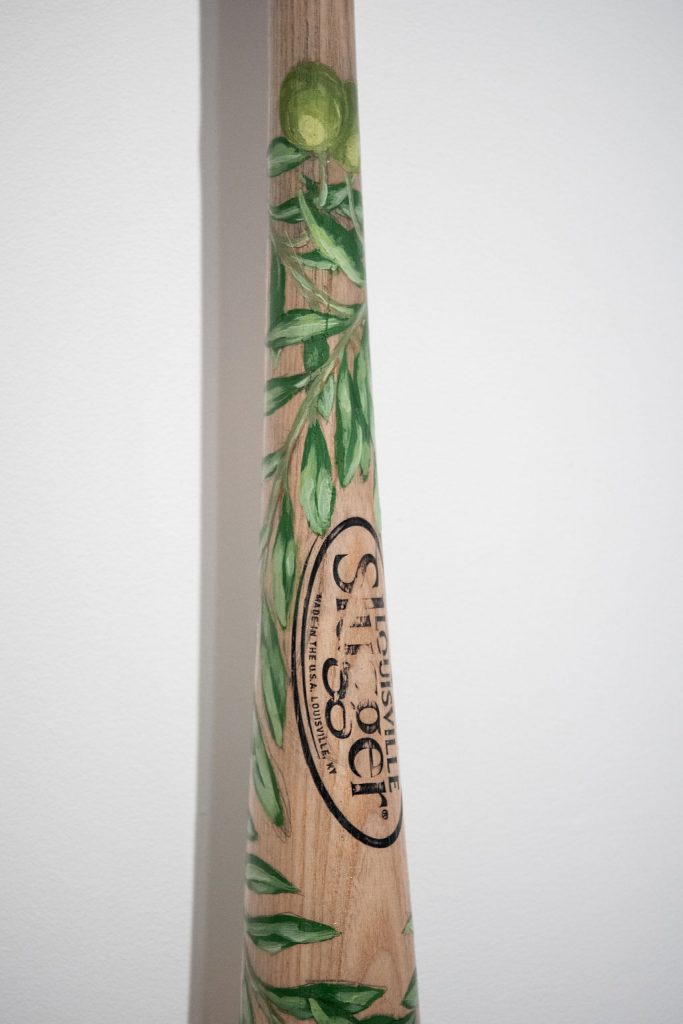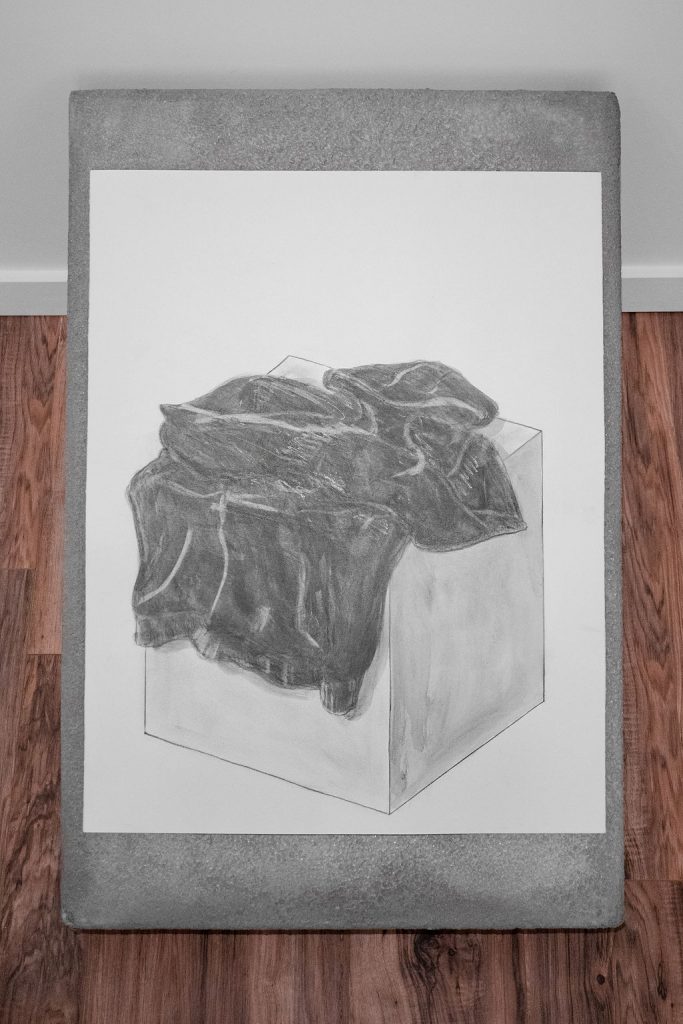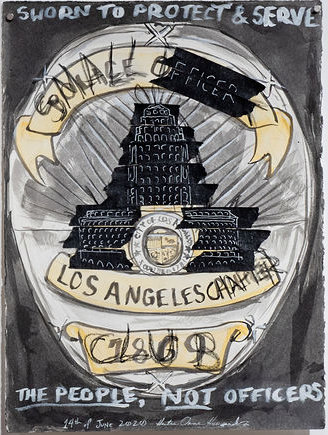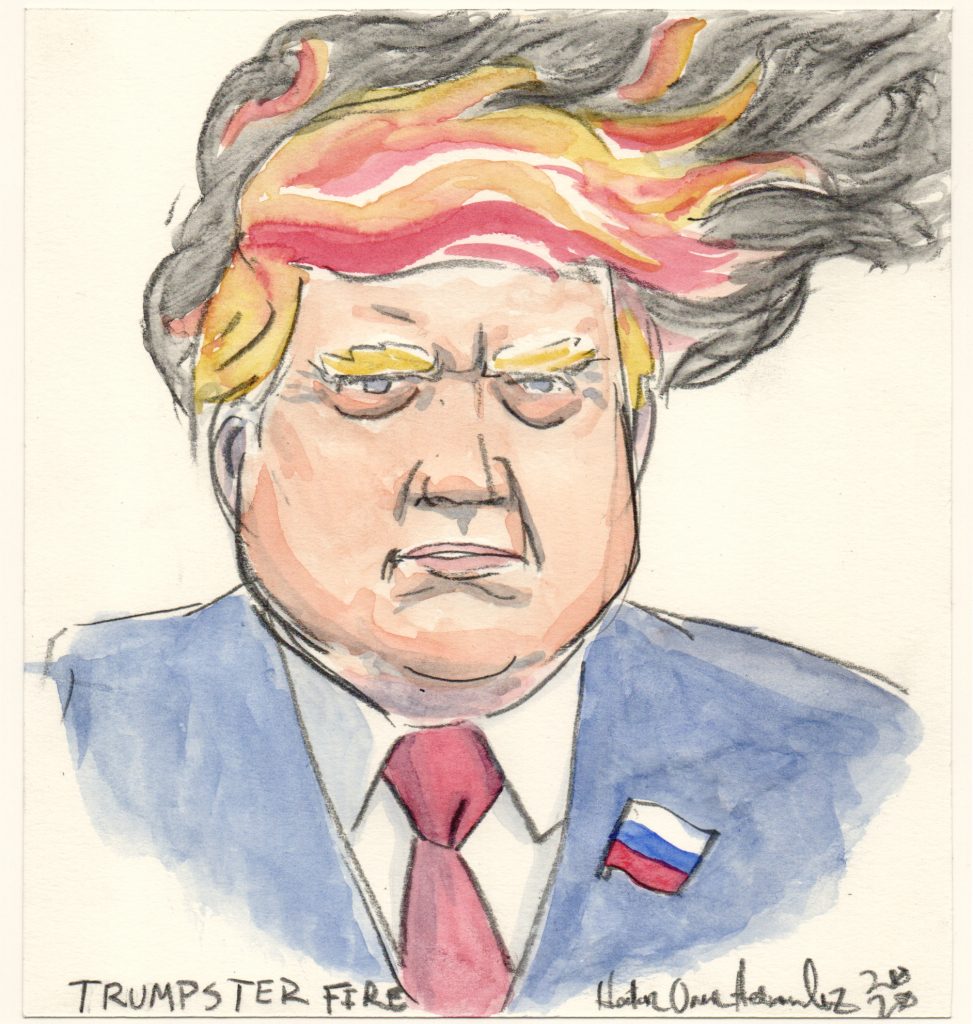My America is Not Your America Ended at STUDIO 203!
You can still check out the ONLINE VERSION AT STUDIO 203 website!
All photos of My America is Not Your America by Cecily Brown
Show Statement in Conversation with Aneesa Shami Zisso from The Studio 203
The idea for this show at the beginning of 2020 was to make and showcase new work. Not sure about what exactly but I saw it as a goal to focus and get back into taking my art practice seriously – and not like a hobby which I realized I had ended up doing for the past 8 years or so. Plus, I had more free time to actually focus on making art after the end of a long-term relationship.
As the year went on and the world became restless because of Covid-19, police brutality, and the social unrest because of these issues and more, my work became more political and felt the need to respond to the issues of the day. It felt liberating to work without editing and overthinking the ideas, and leaving the work itself looking and feeling raw. A lot of it was critical of the Trump administration, and the GOP-led Senate. But, after the initial response, I realized that anger and frustration wouldn’t amount to much if used to ridicule and spew hatred.
So began the process of finding ways to use printmaking, drawing, and paper-making as a means to shift the conversation and focus to building community and having conversations around the importance of craft/making as a way to work through issues, personal and other. It felt fitting to focus on these media for these projects since they all require a physicality to their process, just like any other craft media, and more importantly they can be easy to continue to do at home. Plus, printmaking itself has a long history of being used to make political and social commentary and helped in mass-producing books and distributing information to the masses.
ASZ: One thing I keep remembering from the studio visit is your choice to depict animals/objects as subject matter, rather than people. Would love if you spoke about your choices for imagery subject matter in this new work – has your perspective on this changed or altered with the new body of work? We talked briefly about it, but would love a few sentences about this in your words before I speak on it…
HOH: I remember starting to question my use of people in my work when I started undergrad. This was sparked when I subconsciously felt somewhat out of place in my art classes – being a brown kid from South LA in UC Berkeley, surrounded by other smart, and smarter people, can do that. But I started to think about how the figures I drew would affect my work’s meaning and my own perceptions of who the work is for. Aside from a set of prints that were a mix of my memories of old Mexican movies and trips to Mexico, and a couple of paintings that spoke about American history and economic progress via capitalism, I started to primarily use animals and symbols. Oh, and skeletons! Which were in part because of Dia de los Muertos and my curiosity and love of anatomy and science.
While in grad school at Washington State University, I found myself focusing on themes that focused more on the printmaking process. In particular the Màs Caras and Piggies pieces, where I used a matrix (a litho pronto-plate and a plaster mold) to create multiples that would later be modified and individualized. In doing so, I wanted to play with the idea of the multiple in printmaking while also using masks and piggy banks as stand ins for persons to speak about individuality and wearing masks to cover our true selves. It was also playing off of theme and variation in music, taking a melody (or in this case an object & image) and creating new varied forms from it.
During this period, from undergrad in 2005 up to 2019, it made sense to me to work without human figures in my art. Although I was making work that focused on the urban environment and people, I saw the use of objects, symbols, language, and animals as better ways to have the viewers delve into the themes I was working with at the time – which ranged from mass-production and consumption, to the urban environment, and language.
Now, with everything that has occurred in 2020, it’s difficult not to focus on people in my newer work. I find that what I’m trying to convey in the work for this show doesn’t allow much space to deviate from people to animals or just symbols. The work is about social justice issues, political unrest, and ideally community interaction and growth, all which is affected and cannot exist without people.
The depiction of people is still not very prevalent through all of the work, but it is about the people and (ideally) for the people – the theme is about taking matters into your own hands and doing something about it. In this case, it’s about making paper seed bombs with small groups of interested people and having them go out, plant and spread that positivity after learning something new. And it’s also about creating dialogue about what monument, or type of monument, will be fitting for this point in time as we as a nation are finally speaking openly about our country’s past, and current, sins.
–1/2/2021 —
I wanted the form of the seed bombs to reference American coins (with a Spanglish version of “E Pluribus Unum”) that would be buried, watered, and taken care of by the volunteers. The intention and action of the seed bombs reminded me of religious votive offerings – offerings in anticipation for a particular wish (or sometimes an offering made to a god or saint after a wish is fulfilled). The purpose of this project was a way to build connections with people and communities that would also serve as a way to protest or put our energy for positive change through a mixture of dialogue and introspection – with the introspection part coming as we take time to make the seed bombs and take care of the seeds as they slowly grow and bloom.
–1/16/2021–
I think there was a consensus view that 2021 was going to be better than 2020, especially after Biden won the presidential election and the Covid-19 vaccine began being distributed. But that only lasted 5 whole days!
After the riot/insurrection that happened on January 6, 2021 in the Capitol, the majority of the American people were angry and frustrated, myself included, since it clearly showed unequivocally the double standards of the justice system and the hypocrisy of many Republicans in Congress. And this echoed throughout the media and online, from average citizens to even Joe Biden calling out the black & white difference of how the police treat protests – if you are Black, antifa, or are supporting BLM then you are rioting and need to be arrested/dispersed by force, and if you are white and are rioting, terrorizing, and threatening our Democracy, you are protesting and need to be escorted out of the building. It’s a whole lot of bullshit that was laid bare for everyone to see.
As Aneesa Shami Zizzo and I discussed the work for this show, we spoke about the continued relevance of the work (unfortunately). I ended up testing positive for Covid-19 on January 9, 2021, which meant I had to quarantine and figure out what to do. So I began making more work, thinking about printmaking and its role with commodification, power structures, and how I can voice my opinion as an American Citizen.
Seeing the drastic difference in policing between BLM and the white supremacy rioting, got me thinking about America’s long history of white supremacy ideals being deeply ingrained in societal structures. Mainly focusing on policing and the justice system, generational wealth, economic mobility and disparity, and who in our current political climate truly supports our democracy.
Piece number 1 was a digital political cartoon made as a response to the Democratic candidates winning their runoff elections in Georgia AND the riot/insurrection that happened in the Capitol (both on the same day!). Looking at it one week later, it felt dated only due to the fact that Twitter and Facebook banned Trump from their platforms, and Parler was shut down – who knows what Trump has been up to on his phone since then, or if he even uses it anymore.
The second piece, Get Out of Jail/Go To Jail, came about out of play and practice. I originally was viewing this piece as a good opportunity to improve my graphic design skills as I made light of what occurred at the Capitol, and as a response to the blatant hypocrisy of the police. Once the two images were done, I wanted to make them tangible objects and decided to make them into cards. They’re double-sided cards because as our current events have shown, the justice system itself has two sides depending on the situations and seems to always favor one over the other – such as whites & BIPOC, rich & poor, corporations & individuals, the police & victim/suspect.
The third is a sticker of the American flag with the phrase “Staying Neutral Is Not An Option,” and the date “January 6, 2021” in the original version of the piece. It works in two ways, as a reminder of what occurred that day, and two, as a call to arms to be ready to call out injustice and defend our Democracy. There are two versions of it, one with the flag rightside up, and the other is with the flag upside down, which is used to refer to a time of dire distress to life or property. It initially came about as I listened to the podcast The Messenger, which is about the Uganda presidential elections and felt like an alternate version of how our own elections could have escalated. And much like the Get Out of Jail/Go To Jail piece, there is a duality in how people view our current situation. Although it’s safe to say that the majority of the people in the US and around the world are viewing our current state as being in distress.
I think I’m viewing these as trinkets and commodified artworks that are “cashing in” on our current state of affairs. It’s meant to work in multiple ways. One, the majority of art objects are commodities that are sold, collected, and used to make a profit to live off of the art (well, that’s what we as artists are striving to do, make a living off our work). Two, who is allowed to profit off of such events, and can it be done in ethical ways? Three, printmaking is tightly connected to mass production and can these digital and commercially printed works be viewed as fine art or will they be viewed as simply merch?





































